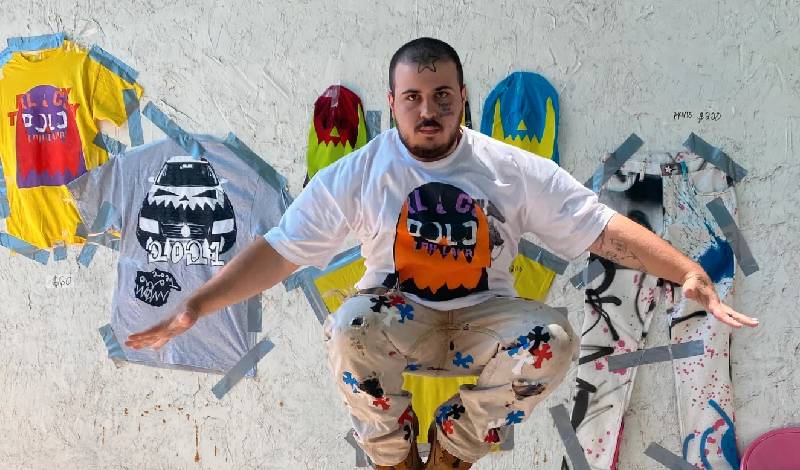Streetwear has always been about rebellion, individuality, and an unfiltered expression of self. Yet every so often, a brand comes along that turns the world of streetwear on its head. Enter Asspizza Clothing—a bold, unapologetic streetwear brand that’s leading a quiet revolution. Known for its unorthodox designs and raw aesthetic, Asspizza isn’t just a clothing line; it’s a movement that gives a new voice to the outsider.
This post takes a deep dive into the phenomenon of Asspizza, exploring its creator, its aesthetic, and its growing influence on both streetwear and fashion culture worldwide.
The Birth of Asspizza Clothing
Asspizza burst onto the streetwear scene in 2013 with a provocative name and equally daring designs. Its founder, Alex Sossah, set out to create wearable art that challenged convention and ignored the rules of traditional fashion. What began as hand-painted garments quickly evolved into limited-edition collections that resonated with a global audience.
Unlike brands created to align with trends, Asspizza was born from authenticity. Its DIY ethos and raw hand-crafted appeal feel intimate, almost personal, giving off an irresistible sense of exclusivity. People weren’t just buying a hoodie or jacket; they were buying into a culture of unfiltered self-expression.
Alex Sossah: The Visionary Mind behind Asspizza
Asspizza wouldn’t exist without its enigmatic founder, Alex Sossah. An artist first and foremost, Sossah’s creative mind fuels every design, campaign, and drop. His approach to fashion is refreshingly unique—he dismisses conventions to focus on self-expression, often hand-painting pieces himself.
Sossah’s early days include collaborations with friends and unorthodox pop-ups held in parking lots or skate parks, embodying the underground spirit that shaped his vision. What makes him even more relatable as a designer is his transparency with his fanbase. Through social media, Alex shares not only his creative process but also his life—making his community feel connected in ways traditional brands rarely achieve.
Today, Alex Sossah stands as both the creative force behind the brand and a symbol of resilience in the face of skepticism. He didn’t wait for the world to hand him opportunities; he built his own world and demanded to be seen.
Breaking Down the Asspizza Aesthetic
What exactly makes Asspizza designs stand out in a sea of logos and graphics-heavy streetwear? For starters, each piece feels deeply personal. There’s often a blend of rough, almost chaotic artistry mixed with a sophisticated eye for color and texture.
Key Features of the Asspizza Style:
- DIY Feel: Pieces often feature hand-painted graphics, stitching, and sharpie-like elements that give them a raw and authentic feel.
- Bold Use of Color: Vibrant colors and unique combinations make every collection visually arresting. You’ll see rich reds, electric blues, and deep oranges contrasted with black or neutral tones.
- Provocative Messaging: Asspizza isn’t afraid to challenge norms through text and visuals that invoke curiosity, shock, or amusement.
- Limited Drops: Every release is incredibly limited, creating a buzz and making owning an Asspizza piece a status symbol.
The result is clothing that feels less like mass-produced industrial fashion and more like wearable protest. Think of it as art you can wear to the skate park or downtown, all while making a statement.
A Community Built Around Connection
Asspizza isn’t just selling clothes—it’s fostering a global community of like-minded individuals. The brand thrives on its audience’s loyalty, which is enhanced through genuine efforts to make people feel seen and included.
The connection goes beyond simple marketing gimmicks. Asspizza actively engages with fans on platforms like Instagram, often sharing their stories, reposting photos of them wearing Asspizza designs, and involving them in campaigns. Every collector and wearer becomes part of a larger family, bonded by their love for bold fashion and boundary-pushing art.
Sossah has also emphasized the importance of accessibility. While the drops are often limited (and can sell out in minutes), their pricing generally avoids extreme luxury levels, making the pieces attainable for younger fans who idolize the brand.
For Asspizza, the relationship with its audience is clearly a two-way street—it listens, interacts, and invites its followers to share in the creation of a cultural phenomenon.
The Future of Asspizza
What does the future hold for Asspizza Clothing? Given its meteoric rise, the possibilities seem endless. However, Sossah has previously stated he wants to preserve the authenticity that first drew fans to the brand. This could mean smaller batch collections and continued experimentation with creative mediums.
We can also expect collaborations with other artists and brands that align with Asspizza’s aesthetic. Sossah’s grassroots style has already started to blur the lines between streetwear and high fashion, and there’s a strong chance the brand will start appearing even more prominently on major cultural stages.
The global streetwear market is becoming increasingly competitive, with many brands now vying for originality. Asspizza, however, will always have the upper hand—what it offers isn’t simply style, but a voice and a community. It’s shaping more than trends; it’s shaping a legacy, one hoodie or custom jacket at a time.
Asspizza Is More Than Just a Brand
Asspizza Clothing is a testament to what happens when authenticity meets artistry. By rejecting industry norms and pouring raw creativity into wearable pieces, Alex Sossah has built not just a brand but an entire movement.
For fans, wearing Asspizza isn’t just about the aesthetic—it’s about self-expression, connection, and being part of something bigger than themselves. Each piece tells a story—of rebellion, individuality, and the power of staying true to one’s vision.
Whether you’re a fashion enthusiast looking for inspiration or someone who simply appreciates powerful cultural movements, Asspizza is a brand worth knowing. Its influence continues to grow, reminding us that clothing can be more than fabric—it can be freedom, creativity, and identity stitched together.
